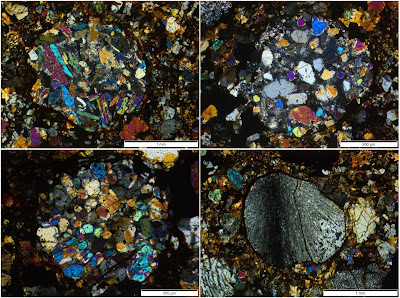A suspected meteorite taken to the Institute of Planetary Research at the German Aerospace Centre in January this year (2020), has been confirmed to be of extra-terrestrial origin. The object, now referred to as the Blaubeuren Meteorite after the town in Baden-Württemberg where it was found, was discovered in 1989 by a homeowner while digging a cable trench. It weighs 30.26 kg, making it the largest ever meteorite found in Germany, and is thought to have fallen to Earth several centuries before being discovered. The meteorite has been identified as a type H4-5 Chondrite (High iron ordinary Chondrite), with a high nickel and iron content, making it particularly dense. This type of meteorite is thought likely to have originated in the Main Asteroid Belt. The Blaubeurren Meteorite shows signs of having been
in an impact prior to it's arrival on Earth, suggesting that in was
deflected from the Main Asteroid Belt by a collision with another body.
The Blaubeuren Meteorite. Gabriele Heinlein/German Aerospace Centre.
Objects
of this size probably enter the Earth's atmosphere several times a
year, though unless they do so over populated areas they are unlikely to
be noticed. They are officially described as fireballs if they produce a
light brighter than the planet Venus. The brightness of a meteor is caused by friction with
the Earth's atmosphere, which is typically far greater than that caused
by simple falling, due to the initial trajectory of the object. Such
objects typically eventually explode in an airburst called by the
friction, causing them to vanish as an luminous object. However this is
not the end of the story as such explosions result in the production of a
number of smaller objects, which fall to the ground under the influence
of gravity (which does not cause the luminescence associated with
friction-induced heating).
Thin sections of the Blaubeuren Meteorite under polarised light. Addi Bischoff/Institute of Planetology/Westfälischen Wilhelms-Universität Münster.
These 'dark objects' do not continue along the path
of the original bolide, but neither do they fall directly to the ground,
but rather follow a course determined by the atmospheric currents
(winds) through which the objects pass. Scientists are able to calculate potential trajectories for hypothetical dark
objects derived from meteors using data from weather monitoring services.
See also...
Follow Sciency Thoughts on Facebook.








